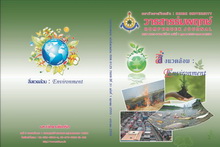ความเสื่อมสภาพของแม่น้ำลี้ และนโยบายสาธารณะ
Main Article Content
Abstract
The Li River’s Deterioration and Public Policy
The Li river’s deterioration consists of water pollution from increased water consumption of people without treatment before drainage, overflows flooding and droughts affecting dry up and slow flowing of water from winter to summer. The major causes are people’s activities, especially water drainage from settled along the Li river community, trespassing for agriculture, littering on settled along the Li river community, and climate change. In the part of public policy should provide participation to water management which depend on personal factor and community management, and providing knowledge, activities for experience exchange, including cooperation of government / nongovernment organization.
Article Details
Every article published in the Romphruek Journal of the Humanities and Social Sciences is the opinion and point of view of the authors. Thery're not the viewpoint of Krirk University or the editored department. Any part or all of the articles for pablication must be clearly cited.


